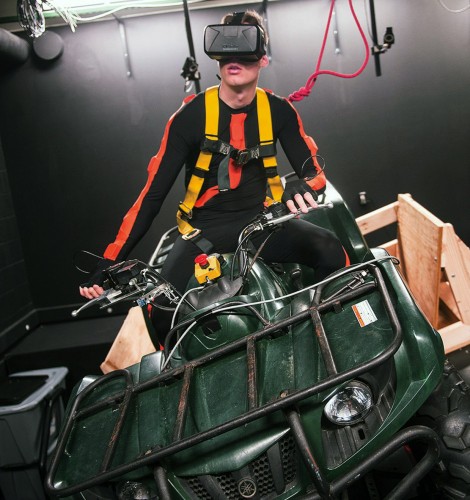Embracing Innovation: Cutting-Edge Technologies Enhancing STEM Education

Virtual Reality (VR) and Augmented Reality (AR)
Virtual Reality (VR) and Augmented Reality (AR) are revolutionizing STEM education by creating immersive learning environments. VR can transport students to distant planets, historical sites, or complex molecular structures, allowing them to experience and interact with content in a way that traditional methods cannot. AR enhances real-world learning by overlaying digital information onto physical objects, enabling students to visualize and manipulate data in real-time. These technologies not only make abstract concepts more tangible but also enhance engagement and retention.
Robotics and Coding Platforms
Robotics and coding platforms are essential in teaching students about automation, programming, and engineering principles. Tools like LEGO Mindstorms, VEX Robotics, and Arduino kits allow students to design, build, and program robots, providing hands-on experience with real-world applications. Coding platforms such as Scratch, Python, and Blockly introduce students to programming logic and problem-solving skills. By working with these tools, students can develop a deeper understanding of how technology works and gain practical skills that are highly relevant in today’s job market.
3D Printing and Design Software
3D printing has opened new avenues for creativity and innovation in STEM education. Students can design and print their models, transforming digital blueprints into tangible objects. This technology helps in understanding complex concepts in engineering and design while fostering creativity and problem-solving skills. Complementary design software like Tinkercad or Fusion 360 allows students to create and modify their designs before printing, providing a comprehensive experience in digital fabrication and design thinking.
Data Analytics and Visualization Tools
Data analytics and visualization tools are crucial for understanding and interpreting large datasets, a common requirement in STEM fields. Tools like Tableau, Microsoft Power BI, and Google Data Studio enable students to create interactive graphs, charts, and dashboards. By analyzing data, students learn to draw meaningful conclusions and make data-driven decisions. These tools also introduce students to the concepts of data science and statistical analysis, skills that are increasingly important in a data-driven world.
Online Simulations and Educational Games
Online simulations and educational games offer dynamic ways to explore STEM concepts through interactive and engaging experiences. Platforms like PhET Interactive Simulations and Khan Academy provide virtual labs and exercises that allow students to experiment with scientific phenomena or solve engineering problems in a simulated environment. Educational games such as the Kerbal Space Program and SimCity integrate STEM learning into gameplay, making complex concepts accessible and enjoyable.
Conclusion
Integrating advanced technologies into STEM education transforms how students learn and interact with core subjects. From immersive VR experiences to hands-on robotics kits and data analysis tools, these innovations provide exciting opportunities for exploration and discovery. As technology evolves, staying abreast of these developments ensures that educators can offer relevant, engaging, and effective STEM education. By harnessing these tools, we can inspire the next generation of scientists, engineers, and technologists, preparing them for a future where their skills and creativity will drive progress and innovation.







 Call
Call
 Mail
Mail